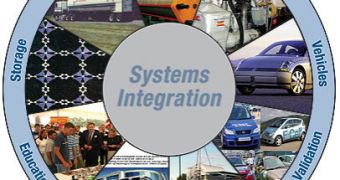In a new study, published in the January 23rd issue of the journal Science, researchers from Penn State University and the Virginia Commonwealth University detail their common find – a novel way of synthesizing hydrogen, by subjecting specific clusters of aluminum to the action of water. The success of the new process proves that it's not necessarily the electronic properties of substances that make them able to, for example, generate oxygen, but that the geometries of the clusters are crucial.
"Our previous research suggested that electronic properties govern everything about these aluminum clusters, but this new study shows that it is the arrangement of atoms within the clusters that allows them to split water. Generally, this knowledge might allow us to design new nanoscale catalysts by changing the arrangements of atoms in a cluster. The results could open up a new area of research, not only related to splitting water, but also to breaking the bonds of other molecules, as well," A. Welford Castleman Jr, Penn State Departments of Chemistry and Physics Eberly Family distinguished chair in Science, and Professor Evan Pugh explain.
The process through which hydrogen is obtained from aluminum and water is fairly complex. In microscopic holes in the clusters, water is trapped between two aluminum walls. One of these walls is charged positively, and attracts the oxygen in water, while the other attracts a hydrogen atom. But each water molecule has two hydrogen atoms, so it stands to reason that if several water molecules are processed at the same time, then each of them will release one atom carbon into the researchers' custom-designed flow-reactor.
These "rogue" atoms bind in pairs of two, and create hydrogen gas (H2), which, in this case, has a fairly high degree of purity. "The ability to produce hydrogen at room temperature is significant, because it means that we did not use any heat or energy to trigger the reaction," Shiv Khanna, who is a Professor of Physics at the Virginia Commonwealth University, says.
"Traditional techniques for splitting water to produce hydrogen generally require a lot of energy at the time the hydrogen is generated. But our method allows us to produce hydrogen without supplying heat, connecting to a battery, or adding electricity. Once the aluminum clusters are synthesized, they can generate hydrogen on demand without the need to store it," he adds.

 14 DAY TRIAL //
14 DAY TRIAL //